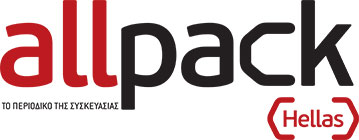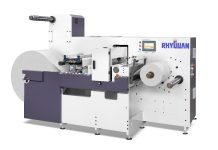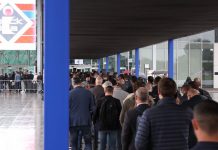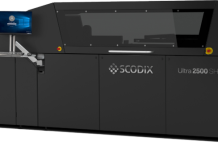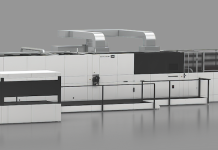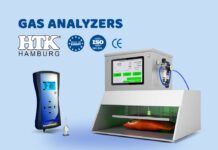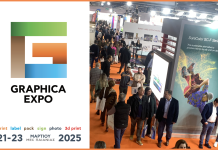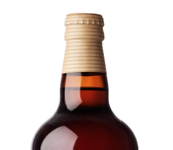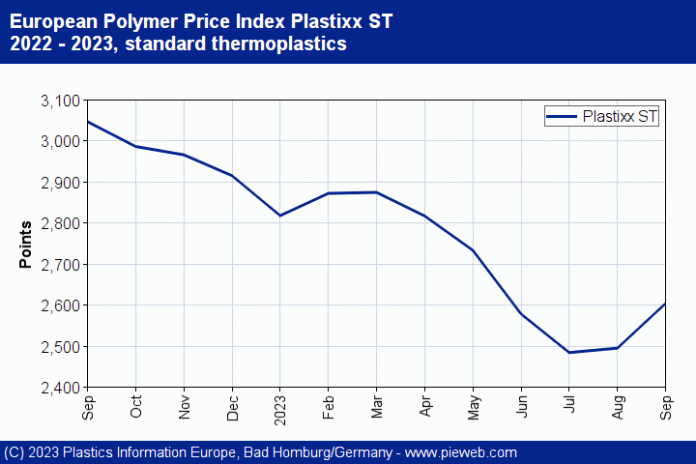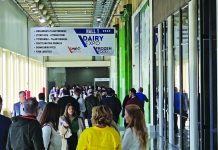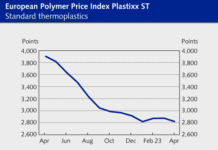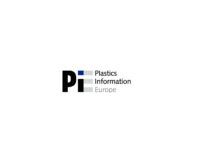PE: The production cutbacks and maintenance turnarounds in Europe have taken effect. The quantities of C2 available on the European market declined significantly, and the volume of imports also shrank, resulting in a balanced market – even if at a low level. With many types, producers were able to push through their increased costs, and in many cases, the rises were (well) above the increase in the C2 contract (up EUR 75/t in September).
The latest price negotiations in October are likely to continue at an equally tough level because C2 has again gone up considerably this month by EUR 65/t. The balanced market will allow producers to also push through more than just the straight feedstock costs. Imports will once again exert little influence on the overall situation, and many European players are likely to say it is no longer worth ordering them. Demand from the customer industries (food packaging, construction, and automotive) is, however, very likely to remain weak. A real recovery is no longer to be expected before the end of the year.
PP: The downslide in polypropylene prices bottomed out in September 2023, with quotations rebounding on the back of a EUR 60/t rise in the C3 contract and the noticeable improvement in supply issues. Demand remained sluggish, and in a market lacking drive, the few bright spots included converters replenishing inventories at the end of the summer vacation season or ordering early to get ahead of potential price increases.
For October, the parameters are much the same: the monthly C3 contract added a further EUR 60/t, and the meanwhile balanced supply situation will allow producers to raise PP prices again at the beginning of the fourth quarter.
PVC: After PVC prices had moved in only one direction since April 2022 – namely downward – they turned upward again for the first time in September. The price of base S-PVC and PVC compounds went up, albeit only moderately. The increased ethylene costs (up EUR 75/t) were thus priced in on a pro-rata basis at least. Even though demand improved somewhat when the summer holidays came to an end, this by no means marked a fundamental change. The construction industry in particular is too deep in recession. Supply was sufficient even though production had been curtailed and fewer imports were coming into Europe.
In October too, producers are expected to make every effort to recoup at least half the ethylene costs. They should also be successful if less material is available on the market, such as for E-PVC pastes. This is expected to be the case following the recent outages and maintenance.
Styrenics: September saw a hike in European styrenics prices after having left this year’s lows behind a month earlier. Demand remained subdued – and as if there was a need to double down on this, business media reported another drop in the S&P Purchasing Managers’ Index for the Eurozone. The actual reason for the price increase of styrenics in September, however, was the strong increase of the SM reference (up EUR 170/t). While the styrene cost increase more or less acted as a guideline for EPS prices, the pricing for polystyrene and ABS varied widely. Those who bought from producers had to accept the fact that they were passing on (at least large parts of) the monomer change. In distribution, price increases turned out to be significantly lower, sometimes even reaching a rollover. This was particularly noticeable for PS and ABS injection moulding grades.
By now, there are already signs that October will see further price increases in Europe, as the styrene reference climbed further up (up EUR 60/t) and prices for the other ABS composites also trended up (butadiene up EUR 70/t, ACN up EUR 128/t). At least for PS and EPS, prices should thus come close to the year’s previous high reached in January.
PET: September 2023 could go down as a watershed month in the historical development of the European PET market. The still-prevailing weak demand prompted a producer in northwestern Europe to shut down one of its two major lines. At the same time, the company opened the floodgates of its warehouses to unleash the surging inventories that had built up over the past few months of weak sales. Special offers were thus available with reductions of up to EUR 80/t. That naturally undermined the efforts of the other producers to translate the increased PX costs into price hikes – especially since independent imports from Turkey were on offer at favourable prices. Ultimately, increases of between EUR 10/t and EUR 20/t were achieved for the remaining regular business transactions.
Demand is not expected to pick up at all in October either. At the same time, PX prices are still pointing upwards. The noose around the production lines continues to tighten – the first plant shutdown in September could soon be followed by others. The adjustments to supply could, however, lead to moderate increases at least, despite the weak demand.
For more than 35 years, PIE has been an invaluable source of information for European plastics industry decision makers – a quick, yet in-depth look at the development of plastics markets and polymer prices. Available online 24/7 and as a printed newsletter twice a month. To read the entire report, go to www.pieweb.com and sign up for a 48-hour free trial!
